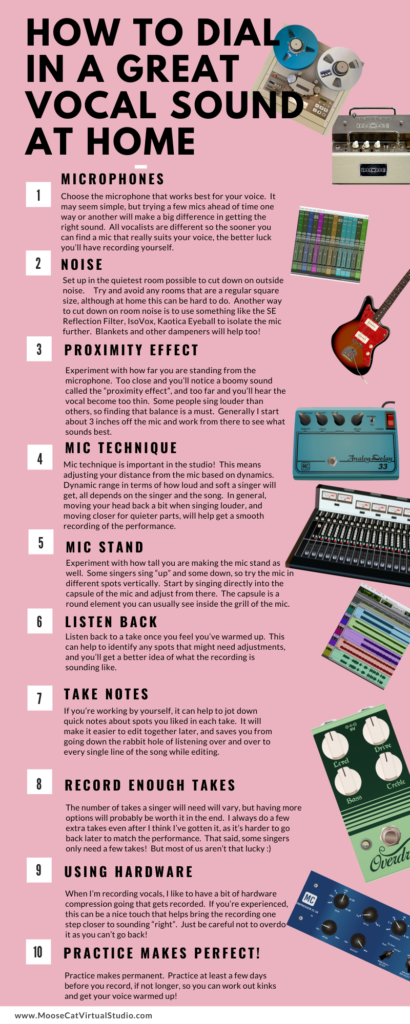How To Dial In a Great Vocal Sound at Home

Recording vocals at home can be quite comforting, but it can also be a nightmare if you aren’t properly prepared. Here are some tips to help you dial in a great vocal sound at home!
- Choose a microphone that works for your voice. It may seem simple, but trying a few mics ahead of time one way or another will make a big difference in getting the right sound. All vocalists are different so the sooner you can find a mic that really suits your voice, the better luck you’ll have recording yourself.
- Set up in the quietest room possible to cut down on outside noise. Also try and avoid any rooms that are a regular square size, although at home this can be hard to do. Another way to cut down on room noise is to use something like the SE Reflection Filter, IsoVox, Kaotica Eyeball to isolate the mic further.
- Experiment with how far you are standing from the microphone. Too close and you’ll notice a boomy-ness called the “proximity effect”, and too far and you’ll hear the vocal become too thin. Some people sing louder than others, so finding that balance is a must. Generally you can start about 3 inches off the mic and work from there to see what sounds best.
- Mic technique is important in the studio! This means adjusting your distance from the mic based on dynamics. Dynamic range in terms of how loud and soft a singer will get, all depends on the singer and the song. In general, moving your head back a bit when singing louder, and moving closer for quieter parts will help get a smooth recording of the performance.
- Experiment with how tall you are making the mic stand as well. Some singers sing “up” and some down, so try the mic in different spots vertically. Start by singing into the capsule of the mic and adjust from there. The capsule is a round element you can usually see inside the grill of the mic.
- Listen back to a take once you feel you’ve warmed up. This can help to identify any spots that might need adjustments, and you’ll get a better idea of what the recording is sounding like.
- If you’re working by yourself, it can help to jot down quick notes about spots you liked in each take. It will make it easier to edit together, and saves you from going down the rabbit hole of listening over and over to every single line of the song.
- The number of takes a singer will need will vary, but having more options will probably be worth it in the end. I always do a few extra takes even after I think I’ve gotten it, as it’s harder to go back later. That said, some singers only need a few takes! But most of us aren’t that lucky 🙂
- When I’m recording vocals, I like to have a bit of hardware compression going that gets recorded. If you’re experienced, this can be a nice touch that helps bring the recording one step closer to sounding “right”. Just be careful not to overdo it as you can’t go back!
- Practice makes permanent. Practice at least a few days before you record, so you can work out kinks and get your voice warmed up!
